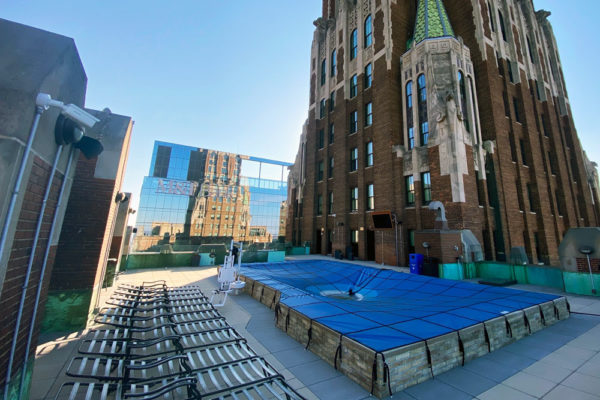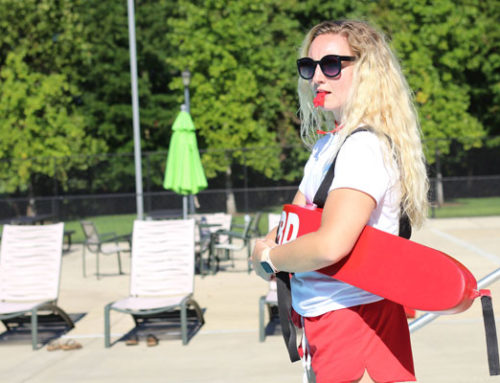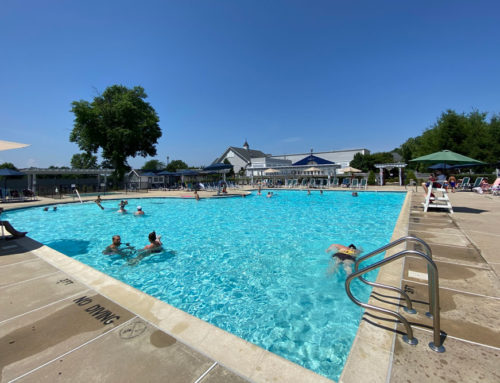
There’s an old saying (not from Abe Lincoln) that if you have five minutes to chop down a tree, you should spend the first two and a half sharpening your axe. While it might look like it takes us a few weeks to get a pool ready for the Memorial Day crowd, the work really starts in September — exactly the time when we close most pools for the winter. A beautiful blue pool is just the final product of long-term planning and execution happening behind the scenes.
Pool management is a 365-days-a-year operation, even if yours is only open for a quarter of the time. Here’s what the offseason and preseason months look like for us, step by step, when we’re writing our summer pool opening checklist.
We write our lists in the winter
Cooler fall and winter months might seem like a great time for pool operators to hibernate after an intensive summer season. But the reality is far from that. Sure, you might begin to see our crews out and about in the field by April. But by the time we lift the cover off, we’ve already undergone an enormous amount of planning for the upcoming season.
The “offseason” is when we take into account any failed or outdated equipment in the pump room, or any damage to the pool or deck area masonry. For instance, we might recommend replacing older pool pump models with new ones that comply with the latest Department of Energy recommendations to increase energy efficiency and reduce overhead.
We may also review health code regulations and logs from the last season to uncover ways we can improve, ensuring you will be ready when inspection time rolls around. Any temporary fixes used during the previous summer should be addressed with more permanent solutions.
As your business partner, we always give you these recommendations upfront before we perform any work. The ultimate decision to approve repairs and renovations falls on you, the client, in good faith.
We get your equipment pad ready for “dress rehearsal”
About a week or two before we lift the cover, sometime in late March, we stage the pool equipment and test it again to ensure there’s no damage from winter freeze or suspended use. This is also when we perform a visual check on the pool area itself and the vicinity, to ensure there’s no broken tile or coping, cracks in the concrete, holes in fences, etc.
This initial inspection is our opportunity to understand everything that will need to be accomplished before opening day so that nothing gets missed. Why not treat the water first? Because if we find any broken parts, it might take weeks or months to order, receive, install, and test new equipment. Balancing water chemistry only takes a few days to get started before we can begin daily and weekly maintenance.
We can usually tell what your pool will look like before we lift the cover
Pulling the cover off a community pool is a moment of truth. It’s a lot like when vineyards uncork their new wine vintage for the first time, because this is when you really know whether you did everything right in the offseason.
Most of the time, things go according to plan and we can “flip” a pool within a matter of days or weeks by treating the water and skimming surface debris. This is the best-case scenario, and it occurs nine times out of 10 when the pool is winterized correctly and work begins before temperatures rise too much. The pool’s color might be a little cloudy or a light green, but that’s an OK place to start.
What we don’t like to see is dark green or black-colored pool water. This usually indicates a nightmare scenario that — more often than not — stemmed from a previous operator cutting corners and performing a half-baked winterization process, or a client making a later commitment to the service.
Not only is it gross, but getting rid of pool water in such poor condition is much more labor- and budget-intensive. Instead of a simple shock-and-scrub job, your preseason now entails draining the pool, acid-washing the walls, refilling your pool, and then we get to balance the water chemistry.
This route is not ideal for two (but really several) main reasons:
- An acid wash might make your plaster finish look shiny and new, but it’s really just stripping away the plaster layer-by-layer. If you do it too many times, you’ll need to replaster the pool entirely.
- You should NEVER empty a pool unless absolutely necessary because doing so could cause the pool to “float.” This happens when the water table of the surrounding ground area is so high, that the water literally lifts the pool out of the ground. Emptying a pool responsibly is a process requiring an understanding of how to protect it. You won’t just have to start preseason prep all over again — you’ll probably need a new pool construction job, too.
While we are well-equipped to handle these major renovations and repairs (and minor ones, too), it’s much less painful to prevent these problems in September, than treat them in April.
If you’re feeling underprepared for the upcoming pool season, let us help you out! Contact our team today and we’ll help you figure out an emergency action plan to get your pool ready for Memorial Day weekend.





